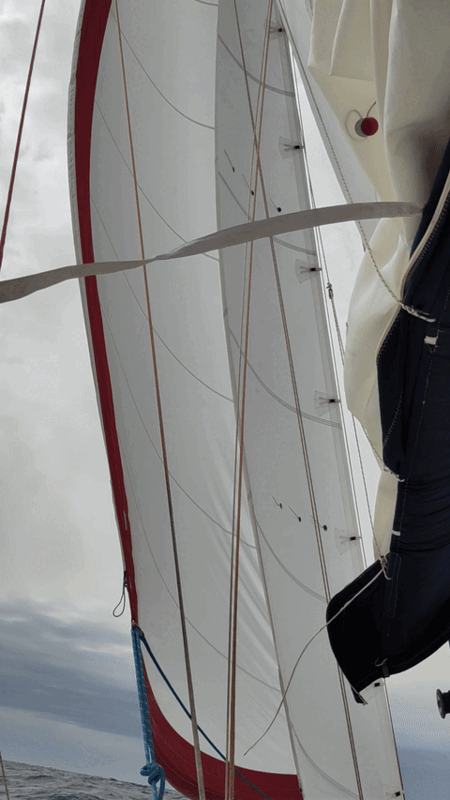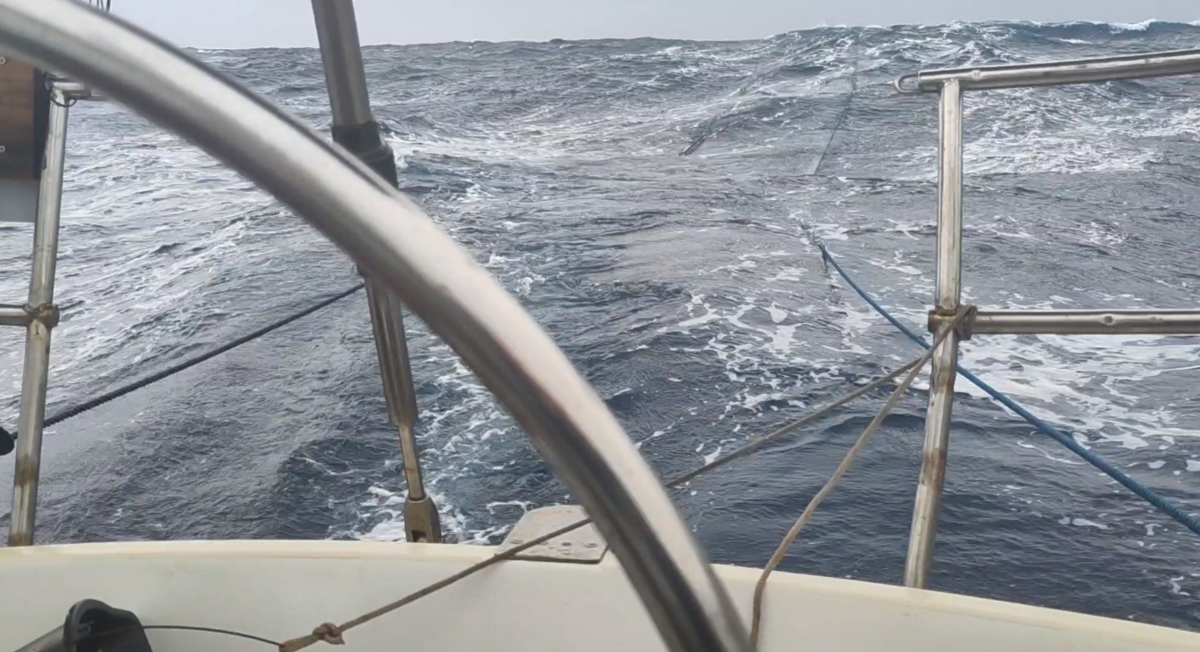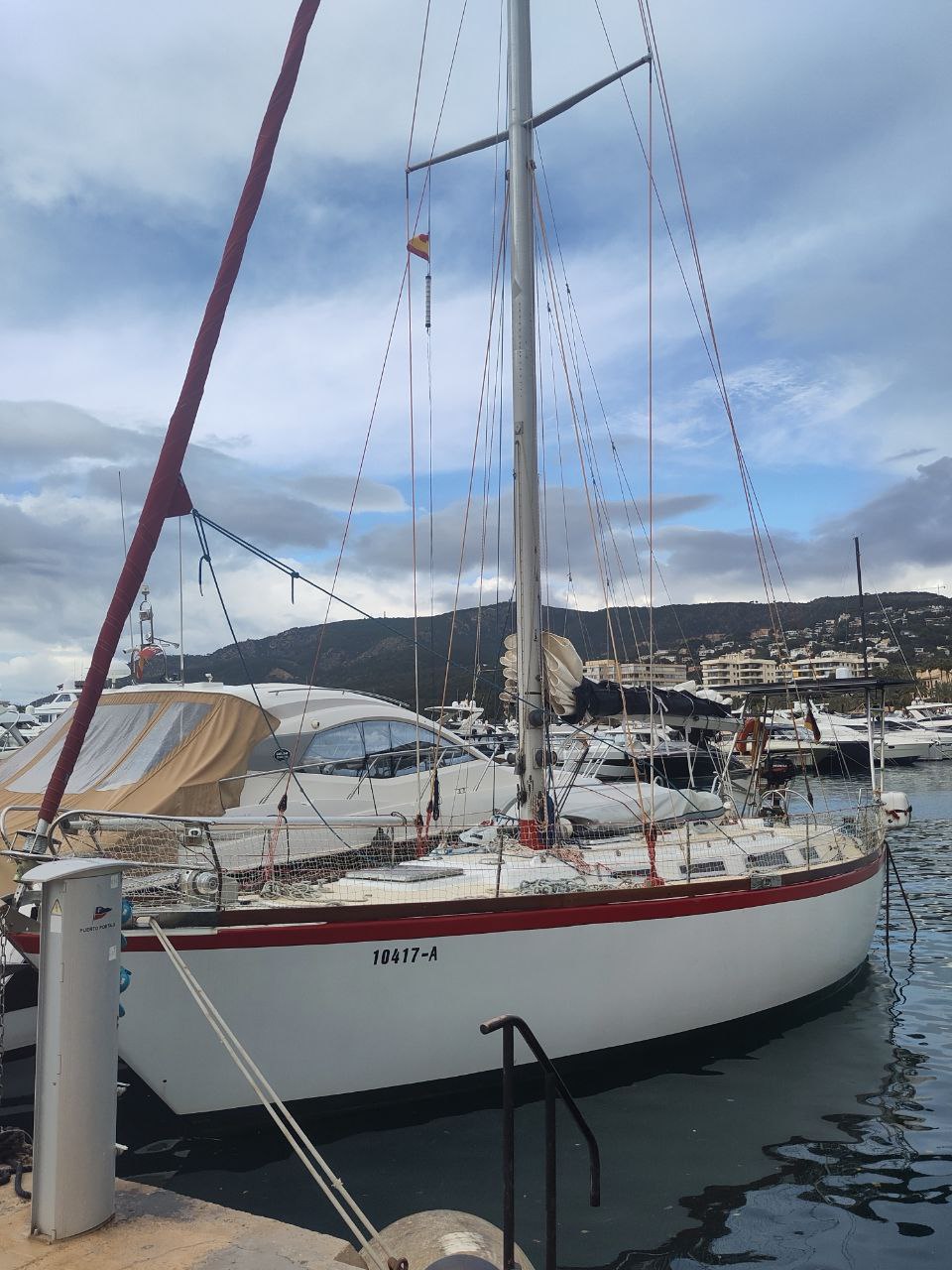⛵ Cefalu (Sicily) 🇮🇹 to Mallorca (Balearics) 🇪🇸
Posted on March 22, 2025Track data available for this sailing hop.
Loading track map...
I had planned a straightforward passage through the strait of Bonifacio, then on to the Balearics with favorable easterlies. It became a longer journey than expected - nine days that taught me quite a bit about the boat and about sailing alone.
The Tyrrhenian Sea didn’t provide the winds I was hoping for. More problematically, the autopilot failed again on day two, leaving me hand-steering through constantly changing conditions. Without being able to rest properly, fatigue became an issue quickly.
On day three, a squall with 30-knot winds caught me. Hand-steering meant I couldn’t reef while maintaining course, so I had to accept being pushed off track. I’d also left Sicily with half-empty batteries and questionably untasty water by accident, which didn’t help morale.
The rigging then started causing real concern. The lower shrouds and babystays had worked themselves loose enough so that I could see the mast flexing with each wave. I spent considerable time tensioning the lashings with winches, but they’d go slack again within minutes of normal wave action. The shrouds were hanging quite loose - not what you want to see mid-passage.
With headwinds, empty Battery and a generator out of fuel reaching the Srait of Bonifacio seemed unlikely. I took time during a lull to properly examine the autopilot. I found two loose bolts on it’s case. The unit wasn’t broken - it simply wasn’t properly secured to the hull, so it was moving instead of turning the rudder. A straightforward fix once identified.
This success encouraged me to look at the rigging problem differently. Rather than trying to re-tension the asymmetric lashings conventionally, I used small spreaders to create additional knots, effectively shortening the lashings. Not elegant, but it held.
With systems working again and easterly winds arriving on March 18th, I decided to pass south of Sardinia and take the direct route to the Balearics. I knew this meant conditions of 20-30 knot winds and high waves - stronger than I’d sailed in intentionally before. Passing Sardinia’s southern cape that evening, the was no going back.
The next morning brought 26 knots, building steadily. I raised the centerboard halfway to reduce the risk of tripping in the following seas. I set up staysail and double-reefed main, and prepared drag lines in case the autopilot struggled. It managed the 2-3 meter following seas well enough.
Sixty miles from Ibiza on Friday afternoon, the situation changed quickly. I hadn’t had a fresh forecast in days when the easterlies died and were replaced by 45-knot southwesterlies. The boat was knocked flat, toerail submerged, lying beam to the wind. The main traveler failed and the sail flogged heavily. I couldn’t head up or bear away initially.
I remembered the drag lines and deployed them, which allowed me to bear off. The drogue I tried next lasted about a minute before parting. With the wind direction taking me back toward Italy, I needed to get the trysail up - something I’d never done before. It had an eye instead of a slider on its neck, but I managed to rig it with line.
Running through the night with staysail and trysail, taking waves over the side, I reached Mallorca the next morning. I was quite glad to see it.
Weather Conditions
- Wind: Variable light winds, then 20-30 knots following, finally 45 knots from southwest
- Seas: 1-3 meters, following seas initially, then head seas
- Weather: Fair at start, deteriorating
Navigation
- Departure: Cefalu, Sicily
- Arrival: Puerto Portals, Mallorca, Balearic Islands
- Distance: 393 nautical miles (about 727 kilometers)
- Duration: 9 days (March 13-22) - far longer than planned!
Technical Notes
- Autopilot mounting bolts worked loose - the sensor diagnostics were misleading
- Rigging lashings need better initial tensioning system
- Main traveler stoppers insufficient for heavy weather loads
- Trysail rigging needs proper track fittings
- All hatches leaking heavily in larger seas
Lessons Learned
- Hand-steering for extended periods is more fatiguing than anticipated
- Equipment failures tend to compound when you’re tired
- The trysail proved useful once properly rigged
- Native Iridium weather forecasts over satelite very disapointing.
Photos
 upwind with double headsails
upwind with double headsails
 towing a long cable as break
towing a long cable as break
 arrived in Puerto Portals
—
arrived in Puerto Portals
—
Enjoyed this post? Never miss out on future posts by subscribing via RSS or email